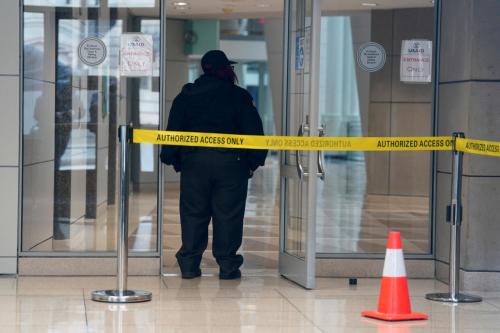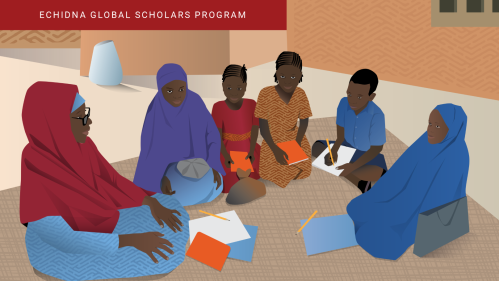The second round of international peace talks on the Syrian crisis—referred to as Geneva II—are being held today in Montreux, Switzerland. These talks aim to move forward implementation of the Six-Point Plan agreed on at Geneva I in June 2012 by the Action Group for Syria led by the United Nations and the League of Arab States. This plan included calls for a political transition in Syria.
In Montreux, in addition to revisiting the points in the 2012 plan, the representatives should also specify measures to protect education from attack and to redress the catastrophic condition of Syrian education as matters of international concern and security.
Whether or not Geneva II would be held, and who would attend, has been the subject of intense debate for months. These political discussions have largely been separate from those surrounding the Second Humanitarian Pledging Conference for Syria in Kuwait on January 15th. At this conference, $2.4 billion was pledged against the $6.5 billion appeal (last year at the same conference $1.54 billion was pledged but 30 percent is still unfunded). The full $6.5 billion—the largest humanitarian appeal in history—is needed for Syria, and donors recognized the need for education to feature in their plans. But many donors were not able to say how much of their pledges would go to education. In Syria 93 percent of children were enrolled in primary school before the war; now 90 percent of Syrian children and youth between the ages of 6 and 17 are estimated to be out of school.
Geneva II directly relates to the fate of children inside and outside of Syria, and the humanitarian response. For those concerned with the welfare and education of Syrian children, one critical outcome for Geneva II is a ceasefire. The Action Group for Syria has called for an immediate cessation of violence in all its forms. The deaths in Syria topped 130,000 in December 2013 before the United Nations stopped keeping count due to challenges verifying the numbers. Of the dead, over 11,000 are estimated to be either women or children. More than 6.5 million people within Syria have been displaced from their homes, over 2 million have fled the country, and more than half of refugees are children.
Another critical provision in the action plan is for immediate and full humanitarian access to be allowed by humanitarian organizations to all areas affected by the fighting. Access must be guaranteed, not only so that wounded can be evacuated, but also so that civilians can receive life-saving support and continue their education wherever possible.
Going beyond the Six-Point Plan, political representatives and all parties to the conflict should specify the importance of protecting education from attack and should lay out a plan to redress the education crisis affecting Syrian children and the broader Middle East region. Countries that made pledges in Kuwait should specify what they will do for education, including consideration of the plan proposed by Gordon Brown for refugees in Lebanon. For actors that embrace peace and stability, this is the time to commit to education—not after a transition is secured. Once a crisis is declared over, the world’s attention and ability to produce humanitarian funding is often reduced dramatically and it can take considerable time for agencies to plan and make reconstruction funds available.
Education inside Syria is suffering greatly, with over a quarter of the population displaced and over 3,000 schools already destroyed. Many children and youth outside the country are also missing one to three years of schooling. Schools have been occupied during fighting, and the use of heavy weapons in populated areas has resulted in teachers and students being killed.
The spillover effect on neighboring countries cannot be discounted. In Jordan, there are at least 140,000 Syrians of school age among the 544,000 registered Syrian refugees in a country of 1.3 million. Based on current projections in Lebanon, where the population numbers 4.4 million, almost 700,000 refugees are out of school and need educational services and 80 percent of Syrian children are out of school. In these and other neighboring countries, the education systems that are receiving Syrian refugees are severely stretched; high unemployment and related resentment toward Syrians who are seen as competing for scarce jobs is an issue.
The United Nations has stopped counting the loss of human life in Syria. The loss of education for Syrian children related to this war and the impact on strained, neighboring education systems in the region is immeasurable. These conditions must be recognized and addressed by political actors, not just humanitarian actors. For this reason and so many others, the Geneva II talks must take steps to halt the damage.
The Brookings Institution is committed to quality, independence, and impact.
We are supported by a diverse array of funders. In line with our values and policies, each Brookings publication represents the sole views of its author(s).




Commentary
Geneva II Talks on Syria: Not Just Ceasefire and Humanitarian Access – Committing to Education
January 22, 2014